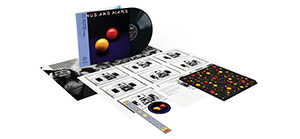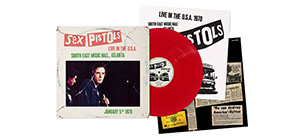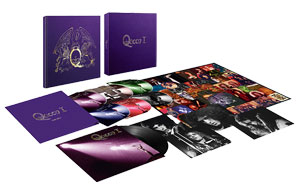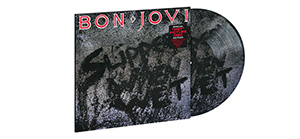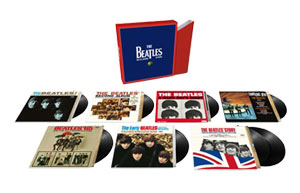John Mayall, The Godfather of British Blues, Has Passed Away
A singer, songwriter, and multi-instrumentalist, Mayall was a central player in the 1960s British blues scene.
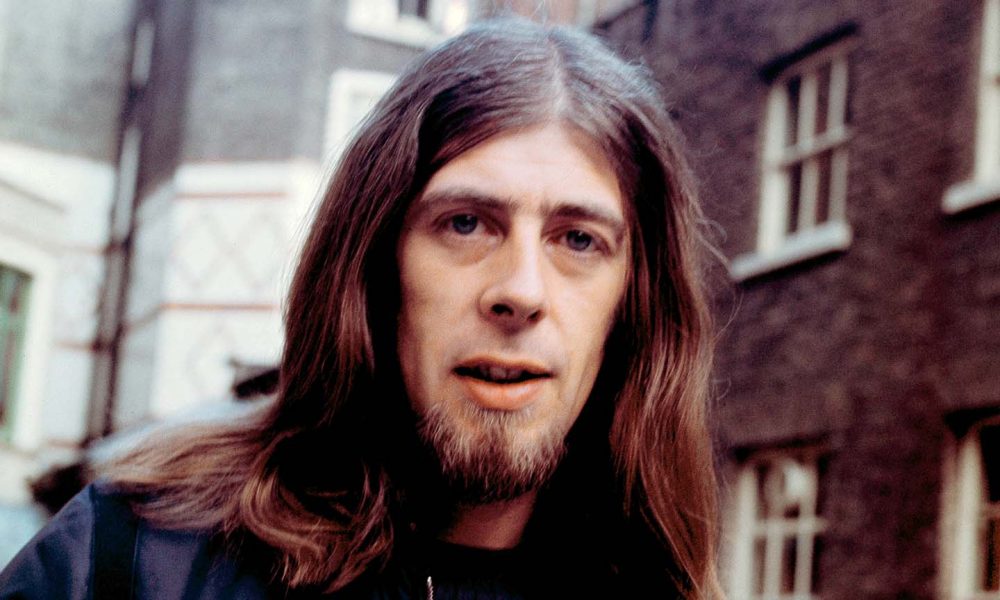
John Mayall, the Godfather of British Blues, has passed away. A singer, songwriter, and multi-instrumentalist, Mayall was a central player in the 1960s British blues scene that birthed groups like the Rolling Stones, the Animals, and the Yardbirds. Originally from the Northwest of England, he rose to fame leading long-running London outfit the Bluesbreakers, whose pioneering blues-rock sound introduced the world to several of rock’s biggest stars, including Eric Clapton, the Rolling Stones’ Mick Taylor, and Fleetwood Mac’s Mick Fleetwood, John McVie, and Peter Green.
Close collaborators remember him as a passionate and scholarly devotee of Black-American music who turned an entire generation of British musicians onto the blues, one of the cornerstones of rock music. “When you went around to John Mayall’s house, it was a shrine to the blues,” Fleetwood told Fairfax Media Australia in 2015. “He’d sit you down, almost like a school teacher, and he’d bring out this vinyl.” Clapton shared Fleetwood’s impression of Mayall as an eccentric mentor figure. “With long curly hair and a beard, which gave him a look not unlike Jesus, he had the air of a favourite schoolmaster, while still managing to be cool,” he wrote in his autobiography. “He didn’t drink and he was a health-food fanatic and the first proper vegetarian I had ever met.”
Inspired by the Chicago and Mississippi blues records he fell in love with as a teen, Mayall developed a distinctive songwriting style that was both heavily indebted to an American art form and uniquely British. A self-taught musician who sang in a Northern British accent and played guitar, piano, and harmonica, among other instruments, he released almost seventy albums across his 60-year career. In the 1960s and 1970s, his idiosyncratic take on the blues made him a fixture in the UK and US rock charts, most notably with his 1969 acoustic album The Turning Point, which was certified gold in the US.
Instead of sticking to traditional blues themes like unfaithful women or bad luck, Mayall distinguished himself by writing about the world around him. On “Nature’s Disappearing,” from 1970, he tackled pollution; on “Plan Your Revolution,” another track from that year, he sang about constructive political and social change. More recently, on “World Gone Crazy” from 2014, he explored the relationship between religious conflict and war. “The blues singer should sing songs about his own life,” he told The Guardian in 2014. “I’ve never thought the blues was a matter of copying other people. You’ve got to think about representing your own life in the music.”
Mayall remained something of a “musician’s musician” for most of his career, destined to be eclipsed in name recognition by artists who had graduated from his famed blues academy. “That’s been the story of my life,” he told ABC Radio in 2016. “I’m kind of an underground figure even today, and people haven’t really cottoned on in the general public.” That didn’t mean that his influence on rock and blues alike wasn’t profound. As The Guardian put it in 2014, “No Brit can be rightly called an institution in the history of the blues like John Mayall.”
The eldest of three children, John Brumwell Mayall was born in 1933 in Macclesfield, Cheshire, to parents Murray and Beryl Mayall. His father was a jazz aficionado and amateur musician who collected 78 rpm records and stringed instruments. At ten, inspired by British singer and wartime movie star George Formby, Mayall picked up a ukulele he found in the house and began teaching himself to play.
By the time he was fifteen, Mayall’s obsession with Formby had given way to an interest in Black-American boogie-woogie, a blues-based, piano-driven style of dance music that emerged in 1920s Texas. He began teaching himself to play blues songs on his family’s piano and using money he earned from a part-time job as a window dresser to purchase records by American artists like Lead Belly and Blind Lemon Jefferson. “My record collection reflected my obsession with the piano, and I rounded up any record that had the word ‘boogie’ in it,” he would recall in his 2019 autobiography, Blues From Laurel Canyon, which he wrote with Joel McIver.
After a stint in the British Army, where he played guitar in a ship band during a two-year assignment in Korea, he returned to Macclesfield and made his first recording, a direct-to-disc boogie-woogie piano tune he captured in someone’s front room. Over the next five years, he studied photography at Manchester’s Regional College of Art and played in a succession of local blues and jazz groups with names like the Blackfriars Society Jazz Band, the House of Sound, and the Powerhouse Four. Through a job as a concert photographer at Manchester’s Free Trade Hall, he continued expanding his network, at one point hosting a private performance by Tennessee country-blues musician Brownie McGhee, one of his idols, at his home.
In the early 1960s, Mayall was working as a typographer at an advertising agency when he became curious about a new sound that was sweeping London’s bar and club scene: Helmed by acts like Blues Incorporated and the Cyril Davis All Stars, it was a raucous fusion of rock & roll, jazz, and American rhythm and blues. When Blues Incorporated came to Manchester for a show in 1962, Mayall was struck that a British band could make music with such an authentic American feel. “I went home buzzing with ideas and ambitions,” he wrote in his autobiography.
Mayall wasn’t the only person who experienced the show as a revelation. Following the concert, he was approached by several like-minded local musicians about forming a new group, based on the idea of using American blues as its source material. The band ended up being called the Blues Syndicate, and Mayall, who sang and contributed piano and harmonica, became its creative nucleus, blending original songs he wrote with covers of authentic American blues songs. With the Beatles, from nearby Liverpool, just breaking on the UK music scene, it was an exciting time to be a young musician in the Northwest of England. “The Beatles paved the way for the next influential wave to hit America,” he wrote in his memoir. “England’s take on the blues.”
Eventually, Blues Syndicate played a show in Manchester opening for Blues Incorporated, whose line-up at the time included future Cream members Jack Bruce and Ginger Baker. After the show, frontman Alexis Korner encouraged Mayall to move to London. He relocated just a few weeks later, quickly forming a new band called John Mayall & The Bluesbreakers. After he settled on a stable line-up that included McVie, a bass player from West London, the group quickly became a fixture on the city’s R&B scene, which centered around hip nightspots like the Flamingo and the Marquee. “There was so much energy with people coming from all over the country to get their start in the London clubs and branch out from there,” Mayall told Ultimate Classic Rock in 2013. “You had The Animals from Newcastle and Spencer Davis and Steve Winwood from Birmingham… people came from all over.”
Before long, the Blues Syndicate had caught the attention of Decca, the storied London record company that was then home to the Rolling Stones. Though it would later be known as one of the musician’s signature songs, the group’s Mayall-penned first single for the label, “Crawling Up a Hill,” didn’t make too many waves upon its 1964 release — its high tempo blues progression and wailing harmonica notwithstanding. But the group’s profile continued to rise after a UK tour with American blues legend John Lee Hooker, who would become a lifelong friend of Mayall’s. “When you’re working with your heroes, it’s a great experience,” Mayall explained to the website pennyblackmusic in 2019. “You learn a lot from them about dynamics, without sitting down and talking about it, just by experiencing it alone.”
The Bluesbreakers quickly became known for their passionate and energetic live performances. One of them, at a London club called Klook’s Kleek, became the basis of the group’s first LP for Decca, John Mayall Plays John Mayall, which consisted mainly of original material. But it was the group’s 1966 debut studio album, Blues Breakers, that would come to be remembered as a big-bang moment in pop music history. Featuring long solos and distorted guitar lines, with a sound that was louder and more aggressive than the traditional blues, it was the dawn of a genre called blues rock. “Trad jazz had been ruling the roost for at least ten years and the new generation were looking for something else,” Mayall told Forbes magazine in 2019. “A new thing was born.”
Mayall had made a major change to the band’s lineup by then, bringing in a 20-year-old Surrey-born guitarist named Eric Clapton, who’d been working on a construction site after a stint playing with the Yardbirds. Clapton’s dazzling fretwork and magnetic stage presence breathed new energy into the group. “Our profile escalated after Eric joined us,” wrote Mayall in his memoir. “Thanks to Eric, there was a marked increase in the prevalence of girls at every show.”
Despite their 11-year age difference, Mayall found a kindred spirit in Clapton. “He was the first person that I could relate to who had some experience with what the blues was all about,” Mayall told Forbes. In his memoir, Clapton describes Mayall as something of a father figure. “Until I came along, he had been quite isolated in his musical tastes, and now he’d found someone just as serious about the blues as he was.” Their chemistry was apparent on “I’m Your Witchdoctor,” from 1965; the first single they recorded together, it was also one of the first records in rock history to feature guitar feedback.
When Blues Breakers came out a year later, Mayall gave Clapton equal billing. “I had decided that as Eric was such a focal point of the band, he should get the credit in a big way for the sound of the tracks,” Mayall explains in his autobiography. The album would come to be known as the “Beano” album, because it featured the guitarist reading the Beano comic on its front cover. Its sound was defined equally by its loose, improvisatory approach and the plaintive emotional cries emanating from Clapton’s raspy guitar, most notably on the band’s inspired cover of Otis Rush’s “All Your Love.”
“We were only doing what we did every night in the clubs and were left to our own devices really,” Mayall recalled to Ultimate Classic Rock in 2013. “We just got on with it, and the whole thing ended up being completed in three days, which felt normal to us.” The album rocketed into the Top 10 of the UK albums chart; in 2003, Rolling Stone would feature it in its 500 Greatest Albums Of All Time issue, at 195.
After Clapton left the band in 1966 to form the supergroup Cream, Mayall replaced him with Peter Green, a guitarist from London who was noted for his sweet tone and expressive note-bending. He’d previously played a few gigs with the Bluesbreakers, deputizing for Clapton. “To my ears, his playing was a revelation,” Mayall declared in his memoir. “He played the blues with the purest tone I’d heard since Eric left. The old sound, spirit, and intensity of the Bluesbreakers were back.”
On the group’s next album, A Hard Road, Green-penned instrumental “The Supernatural” showcased the guitarist’s soaring melodic lines and distinctive use of sustain. Though the album made the UK Top 10, it would be the last Green would make for the group. In 1967, he would join bassist John McVie and drummer Mick Fleetwood, two other former Bluesbreakers members, in starting a new band called Fleetwood Mac.
By this point, Mayall was beginning to earn renown as a talent-spotter — especially when it came to guitarists. That happened once again in 1967, when Mayall brought on an unknown 18-year-old to fill Green’s shoes: an untested guitarist from Hertfordshire named Mick Taylor who’d once stepped in for Clapton at a gig. Taylor would stay on until 1969, when he replaced Brian Jones in the Rolling Stones — on Mayall’s recommendation.
Crusade, one of three albums Taylor recorded with the group, was Mayall’s first LP to chart in the US, marking the beginning of the country’s long love affair with the Macclesfield bluesman. By this time, Mayall had begun branching out to explore new musical territory — most notably with his 1967 experimental solo album, The Blues Alone, where he played all the instruments except for percussion. But the multi-instrumentalist’s fame rested on his work with the Bluesbreakers; following the group’s first U.S. tour in 1968, Mayall returned home to discover he had been voted the number-one blues artist in a readers’ poll by British music paper Melody Maker.
Smitten by America, Mayall returned to Los Angeles on vacation, where he befriended Frank Zappa and hung out with local blues-rockers Canned Heat. His West Coast sojourn would be a pivotal one, culminating in the release of Blues from Laurel Canyon, a 1968 travelog-style concept album where, in an innovative move for a blues musician, each track segued seamlessly into the next. In 1969, his love for Laurel Canyon would lead him to purchase a house there. Though he traveled frequently back to England, he would live in the Hollywood Hills for the rest of his life.
Seemingly out of nowhere, he shocked fans by dissolving the Bluesbreakers. “I felt that I had taken the lead guitar, organ, bass and drums line-up as far as it could go, and coupled with my imminent move to Los Angeles, it seemed that now would be a good time to change things up,” he wrote in his autobiography.
It was the start of a new chapter for Mayall: In 1969, he released a solo live album for Polydor called The Turning Point, which went gold and put Mayall in the Top 40 of the US albums chart. An all-acoustic affair, he described it in the liner notes as an attempt to make “low volume music” that didn’t feature “heavy lead guitar and drums.” “Room To Move,” an infectious number featuring keening harmonica and vocal percussion noises, remains one of Mayall’s most popular tunes.
“These were beautiful days,” he wrote of this period in the States, where he began playing before larger and larger audiences on tour. “We were experiencing America’s rich, open rock’n’roll world and the ladies who came forth to greet us and make us feel like visiting royalty were most welcome.” The attention led him to write a song called “Groupie Girl”; it also went hand-in-hand with an increasingly hedonistic lifestyle, especially for a man who claimed he didn’t drink when he started the Bluesbreakers. According to his memoir, Mayall would become a heavy drinker for thirteen years — though he maintains that he didn’t do drugs. “My alcoholic excesses were seriously out of control,” he wrote.
Musically, Mayall continued to experiment, recording his next album, 1970’s USA Union, with a new drummer-less band that included ex-Mothers Of Invention violinist Don “Sugarcane” Harris; it became his highest-charting album in America, reaching number 22 in the Billboard 200. For his follow-up, a sprawling 1971 double LP called Back To The Roots, he surprised fans by reuniting with Clapton and Taylor; it was the first in a series of line-up changes during his career in America, vesting Mayall with an air of unpredictability. “My record label – Polydor at the time – asked me for new albums every few months, it seemed,” he explained in his autobiography. “To achieve this I needed to keep the music fresh, and that meant rebuilding my line-up from time to time, particularly after long, exhausting tours.”
Over the next four decades, Mayall continued to explore his love for the blues in a variety of different contexts. After taking a funkier direction in the late 1970s, he reverted back to blues rock in the 1980s, then revived the Bluesbreakers in the 1990s — a decade which saw him reunite with his old friend John Lee Hooker, on a 1999 album called Padlock On The Blues. In 2008, he disbanded the Bluesbreakers one last time, though he would continue touring and recording as a solo artist well into his eighties.
In the last 15 years of his life, Mayall was honored with an OBE award, a medal honoring his contribution to music presented by Queen Elizabeth II in a ceremony at Buckingham Palace. He was also inducted into the Blues Hall Of Fame — a remarkable achievement for a musician from the Northwest of England, but a fitting one. Mayall didn’t just play a central role in introducing British audiences to the sound of the blues; he invented an entirely new take on the form and exported it back to its country of origin, turning a younger generation of Americans on to the joys and exquisite sorrows of the blues.
Looking back on his career in his interview with Ultimate Classic Rock, Mayall spoke with modesty of his role in incubating some of the biggest talents in 20th-century rock music. “It’s just a part of my history,” he said. “It really sums up the period of my life when I was in London. It was such a swift turnover of musicians. All of them were just young guys who were just trying to find their feet and I was able to help them along.”
Fleetwood, one of many British musicians who owed a musical debt to Mayall, remembered the whole thing a bit differently. “He created a platform, a stage, for musicians — me being one of them — that needs not to be forgotten,” he wrote in the foreword to Mayall’s biography. “John’s legacy is that he has been true to his schooling as a blues player. He has never compromised that, and he has never pretended to be anything other than that. He has stuck to his guns, and he has placed his love of the blues above anything else.”




